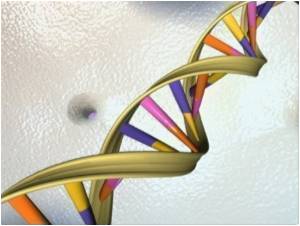A combination of tiny fibres in the bone, when stretched, either get stiffer or more malleable, and this is what makes the bone strong, according to scientists.

Around 70 per cent of bone is made up of crystals of the chalk-like mineral hydroxyapatite. These form around tough collagen fibres known as fibrils that make up most of the rest of bone.
To better understand what makes these fibres so strong, Asa Barber and Fei Hang at Queen Mary, University of London, used a new technique to directly measure the mechanical properties of individual fibrils for the first time.
Barber and Hang used scanning electron microscopy (SEM) to image the fibrils, which measure less than 100 nanometres across - over 1000 times as thin as a human hair. They used antler bone because it is a good model of human bone but more suitable for imaging because of its low water content.
The pair combined SEM with atomic force microscopy, which stretches the fibrils with a specific force. They measured the stress-strain response of six fibrils by plotting how much they stretched when a gradually increasing force was applied. At first the fibres all stretched by the same amount under the same force. However, at a certain point their responses diverged: as more force was applied, some fibres lost their shape at a quicker rate.
Others became stiffer, withstanding a force of around 1000 nanonewtons before they broke. This is roughly equivalent to the force that would be applied by the weight of one-hundredth of a grain of rice. The more malleable fibres broke at a force around 500 nanonewtons.
Advertisement
The researchers next used spectroscopy to investigate the chemical make-up of the samples. Their findings suggest stronger fibres have greater mineral content.
Advertisement
Source-ANI










